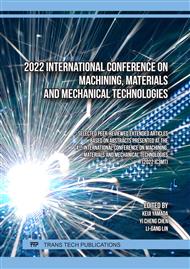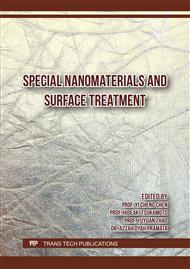p.41
p.49
p.61
p.69
p.81
p.91
p.99
p.119
p.129
A Research on the Enhancing of the Formability of Stainless-Steel Sheet Sus304 by Multistage Single Point Incremental Sheet Forming (MSPIF) Technology
Abstract:
Although the Incremental Sheet Forming (ISF) technology has been studied and applied from the last decade of the previous century with more than 30 years of experiences and ameliorations of the researchers of this field, but the ability of deformation of the formed material sheet still has remained in a restrictive modest value. This sheet forming technology could be divided into 2 mains branches: Single Point Incremental Forming (SPIF) and Two Point Incremental Forming (TPIF) wherein the first one is usually applying in research and the second branch is used in production. The ISF is suitable for forming sheet for a single product or for small batch production with a great advantage of a no-need pestle and mold manufacture in advance, but the formability of formed sheet material cannot bigger than a limited formed angle of about 80o that depends on the material and the forming parameters. There are some ameliorations for increasing the formability of the formed sheet such as heating the formed sheet in Hot SPIF or Multistage SPIF (MSPIF)… All the effort and amelioration measures are confronted with different difficulties. In this paper, we concentrate to study on the MSPIF technology on stainless steel SUS304 by simulation method with the proof of experimental method. The results were also compared to the simple SPIF to show its own pros and cons on the related field such as the technology, the productivity and the lubrication.
Info:
Periodical:
Pages:
81-90
Citation:
Online since:
December 2023
Authors:
Keywords:
Price:
Сopyright:
© 2023 Trans Tech Publications Ltd. All Rights Reserved
Share:
Citation:



